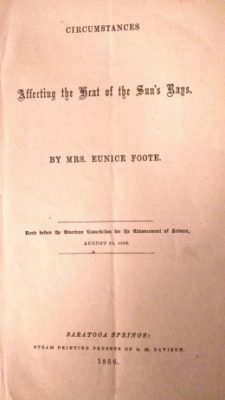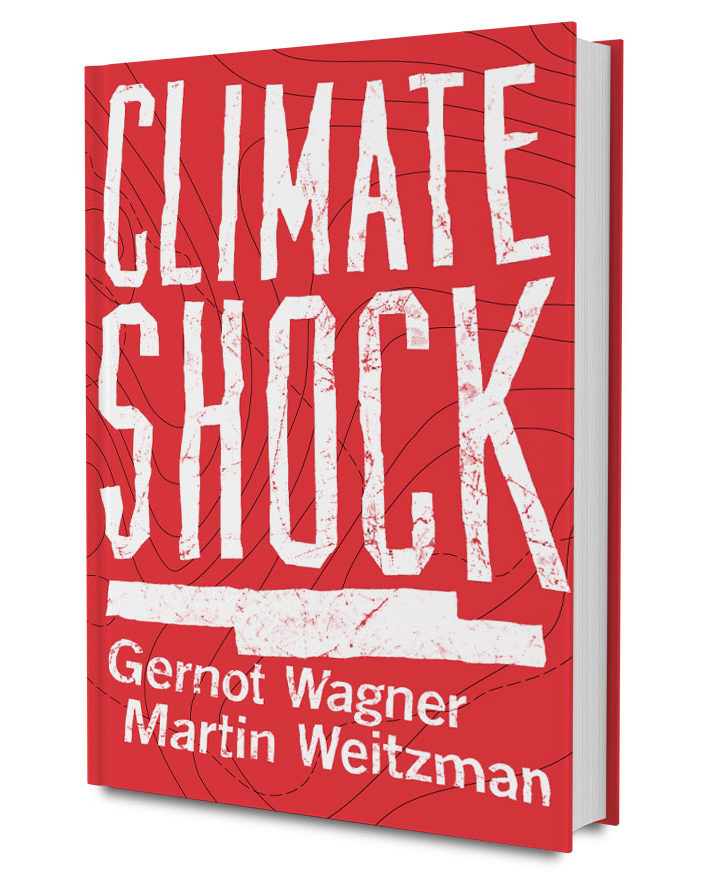Corrections and Additions for Climate Shock
Page 1 of Chapter 1 states that “educated guesses” put the probability of a large asteroid hitting Earth “as a 1-in-1,000-year event.” We then translate that statement into a “10 percent chance each century.” That is a wild overestimate. The correct statement is a “0.1 percent chance each century.” Thank you to Viking Logarta, energy policy advisor at the Institute for Climate and Sustainable Cities in Manila, for pointing this out! (The original statement would only be true if it were a “1,000-year” event. That implies a 1-in-1,000 chance each year, or a 10 percent chance each century.)
Our mention of the “Foreign Policy article describing ‘The Coming Arctic Boom'” on page 9 should have referred to “Foreign Affairs” instead.
Our reference to:
Solomon, Pierrehumbert, Damon Matthews, John S. Daniel, and Pierre Friedlingstein. “Atmospheric Composition, Irreversible Climate Change, and Mitigation Policy.” In Climate Science for Serving Society. Springer Netherlands, 2013. 415–36.
should be:
Solomon, Susan, Raymond T. Pierrehumbert, Damon Matthews, John S. Daniel, and Pierre Friedlingstein. “Atmospheric Composition, Irreversible Climate Change, and Mitigation Policy.” In Climate Science for Serving Society. Springer Netherlands, 2013. 415–36.
Additions
We cite the IPCC Fifth Assessment Report in our discussion of temperatures and sea-level rise during the Pliocene. (See note “Global average temperatures” on page 10.) There we discuss how sea levels during the Pliocene, the last time concentrations of atmospheric CO2 were at today’s levels, were “up to” 20 meters (66 feet) higher than today. The following, newer article adds to that statement by showing how sea levels were at least 6 meters (20 feet), with an upper bound of well above 20 meters (66 feet):
Dutton, A. et al. “Sea-level rise due to polar ice-sheet mass loss during past warm periods.” Science 349 no. 6244 (2015).
We cite “World Energy Outlook 2014,” among other sources, in our discussion of global fossil fuel subsidies adding up to about $500 billion (or roughly $15 per ton of carbon dioxide). (See note “$500 billion per year” on page 22.) This additional reference more clearly discusses the methodologies used to estimate global fossil energy subsidies, with estimates spanning $500 billion to $2 trillion:
Kojima, Masami and Doug Koplow. “Fossil fuel subsidies : approaches and valuation, Volume 1.” World Bank Policy Research working paper WPS 7220, March 2015.
 On page 22—and again, in slightly more detail, on page 35—we confidently say that the greenhouse effect “had been discovered by 1824, shown in a lab by 1859, and quantified by 1896.” True, but there is a key date missing: Eunice Foote first identified carbon dioxide as a greenhouse gas in 1856, three years before John Tyndall’s first publication on the subject. Full citation:
On page 22—and again, in slightly more detail, on page 35—we confidently say that the greenhouse effect “had been discovered by 1824, shown in a lab by 1859, and quantified by 1896.” True, but there is a key date missing: Eunice Foote first identified carbon dioxide as a greenhouse gas in 1856, three years before John Tyndall’s first publication on the subject. Full citation:
Foote, E., 1856. “Circumstances affecting the Heat of the Sun’s Rays.” American Journal of Science and Arts 22(66): p.382.
[Amazingly, at the time of this writing, 14 May 2018, that article has exactly two citations on Google Scholar.]
We cite Cass Sunstein’s Worst-Case Scenarios and Richard Posner’s Catastrophe: Risk and Response, among others, in our discussion of “Worst-Case Senarios” (page 84). Some of the subsequent discussion is a response to a paper by Ian W.R. Martin and Robert S. Pindyck, which had been in private circulation but had not been published at the time. It has since been published as a working paper:
Martin, Ian W.R., and Robert S. Pindyck. “Averting catastrophes: the strange economics of Scylla and Charybdis.” National Bureau of Economic Research working paper No. w20215, June 2014.
Download the full set of end notes and bibliography from Climate Shock in PDF format.
Back to Notes.
